Data providers on the Google October 2023 core and spam update
This was a very big set of Google updates, here is an analysis.
Now that both the Google October 2023 core update is done rolling out and the October 2023 spam update is done rolling out, we wanted to take a deeper dive on how this core update differed from previous Google core updates.
Keep in mind, these updates rolled out at the same time, so the analysis is probably skewed because of that. Of course, Google said spam sites were impacted by the spam update and if you were not spamming and you saw traffic drops, that is probably related to the core update.
Here is the timeline for those two updates:
- The Spam update started on October 4, 2023, and ended on October 10, 2023
- The Core update started on October 5, 2023, and ended on October 20, 2023
There overall was a lot of ranking volatility across many verticals in the Google search results over this time frame, like most Google updates.
Data providers on the Google updates
Semrush. Semrush data showed that we saw some peak volatility of 7.9 in terms of their Semrush Sensor data volatility. The peak occurred on October 10th, as the chart shows. But as you can see, when comparing this to the Google August 2023 core update, there were calm periods with high volatility but with the August core update, it was just all high volatility.
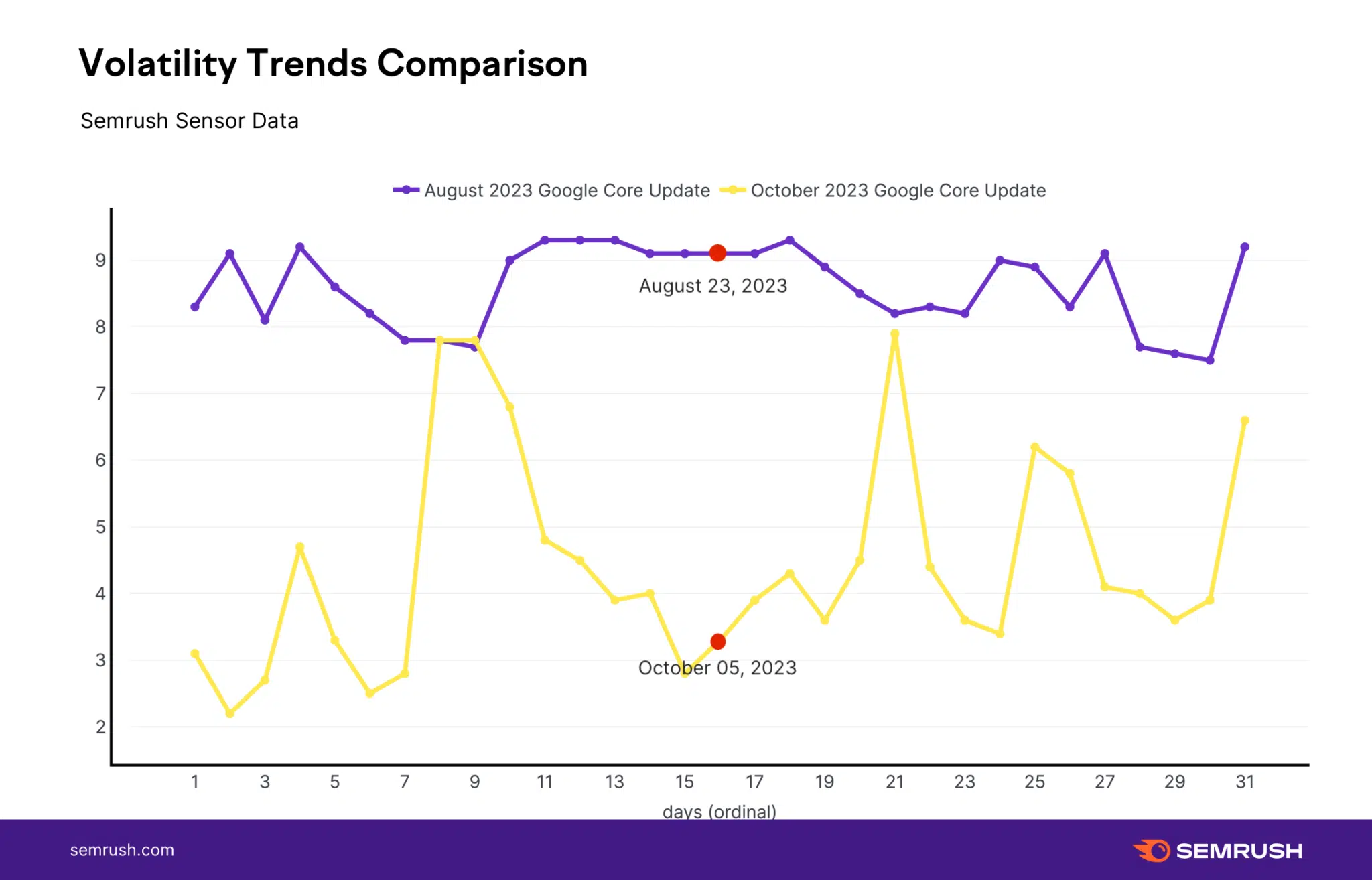
“To that, peak levels of volatility were lower than in August. However, it’s important to remember that the entire environment was volatile in August and it’s unclear how that affected peak volatility levels exactly,” Mordy Oberstein from the Semrush team told us.
Here is a chart showing the peak volatility by niche or industry, comparing the October 2023 to the August 2023 core updates:
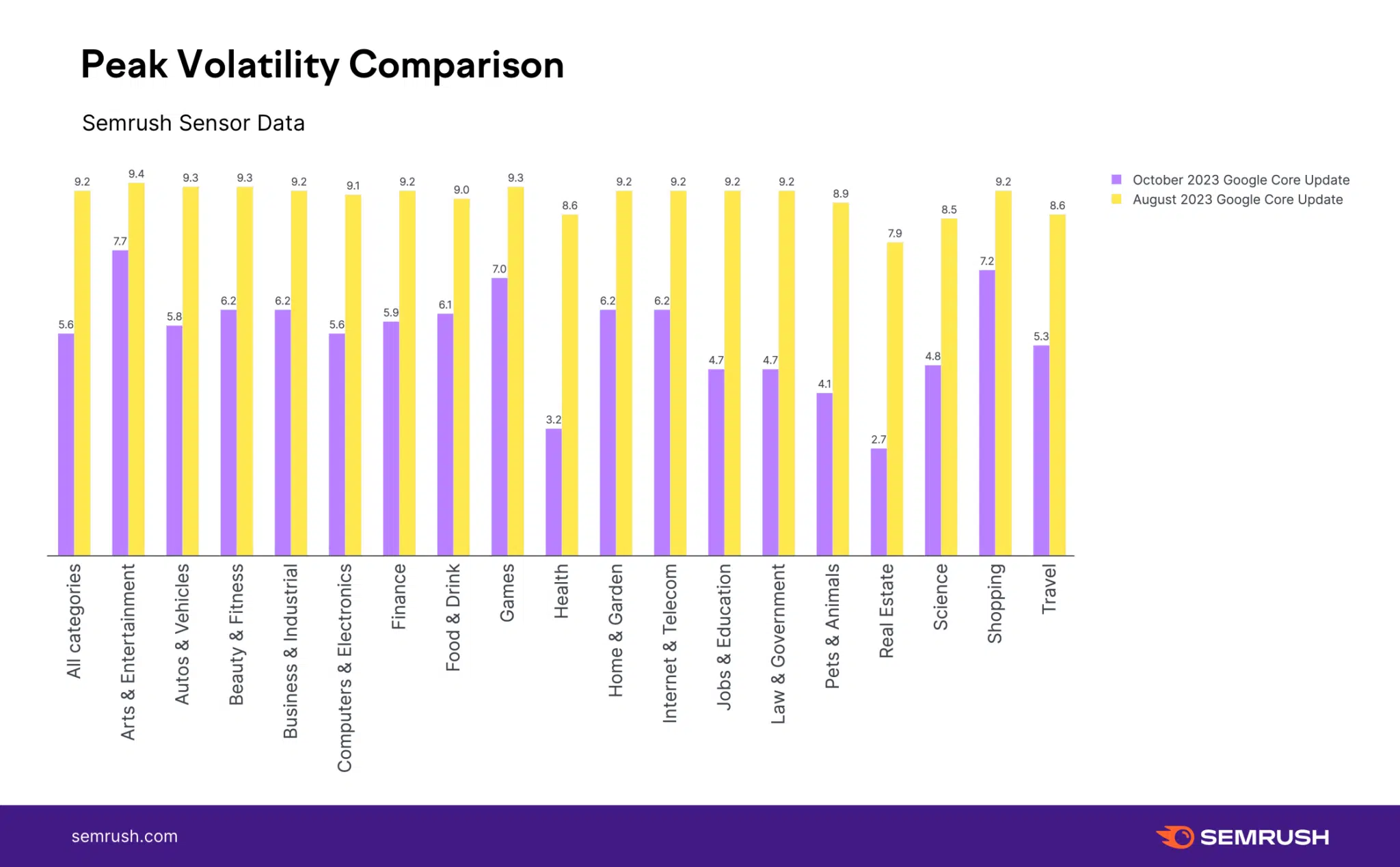
However, when you look at the increases in volatility relative to the baseline, the October 2023 core update was less impactful overall.
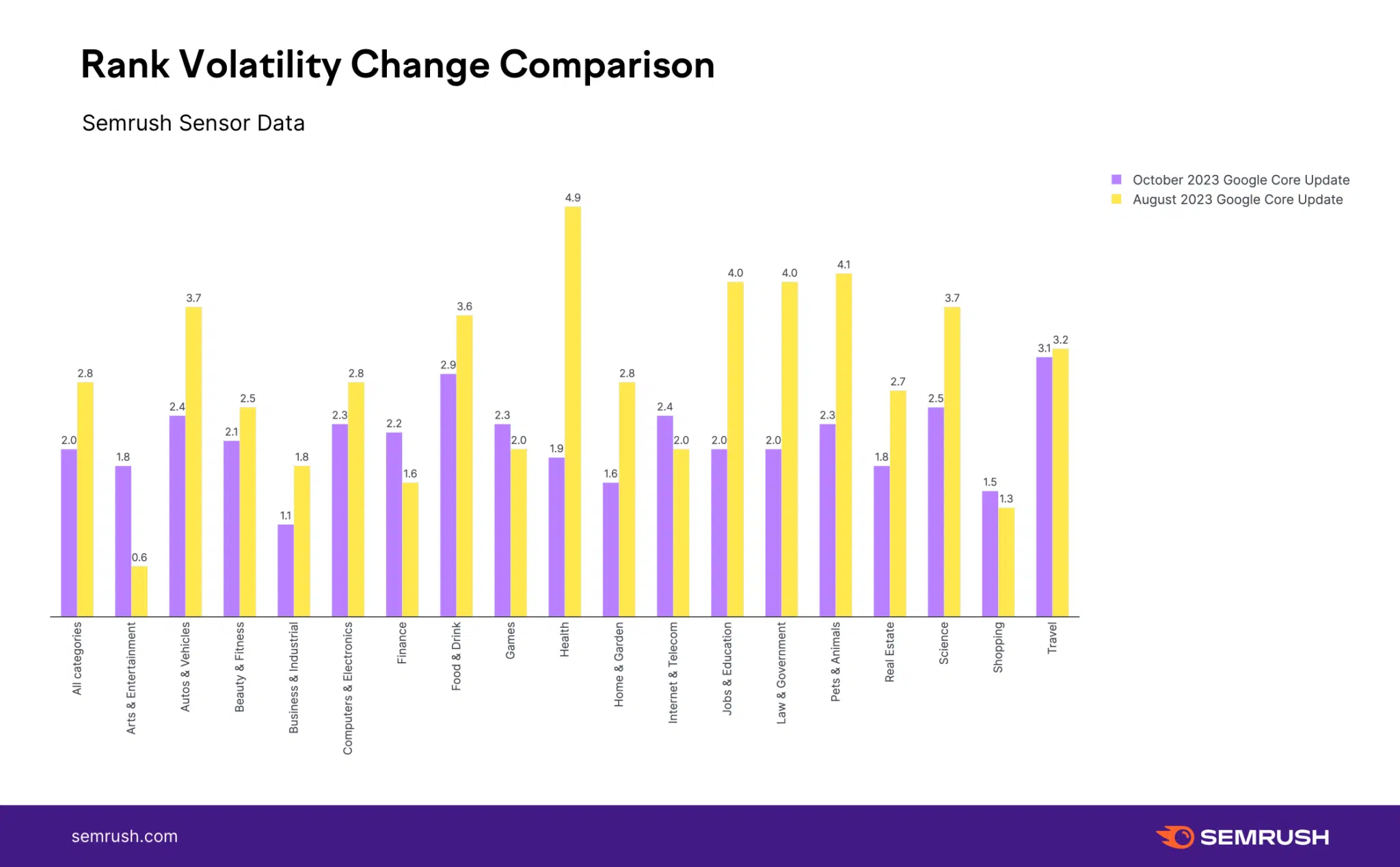
Here is another way to look at the comparison. We see that the average amount of positions URLs gained and lost was around two and a half positions which is lower than the August 2023 Core Update where the average was around three positions.
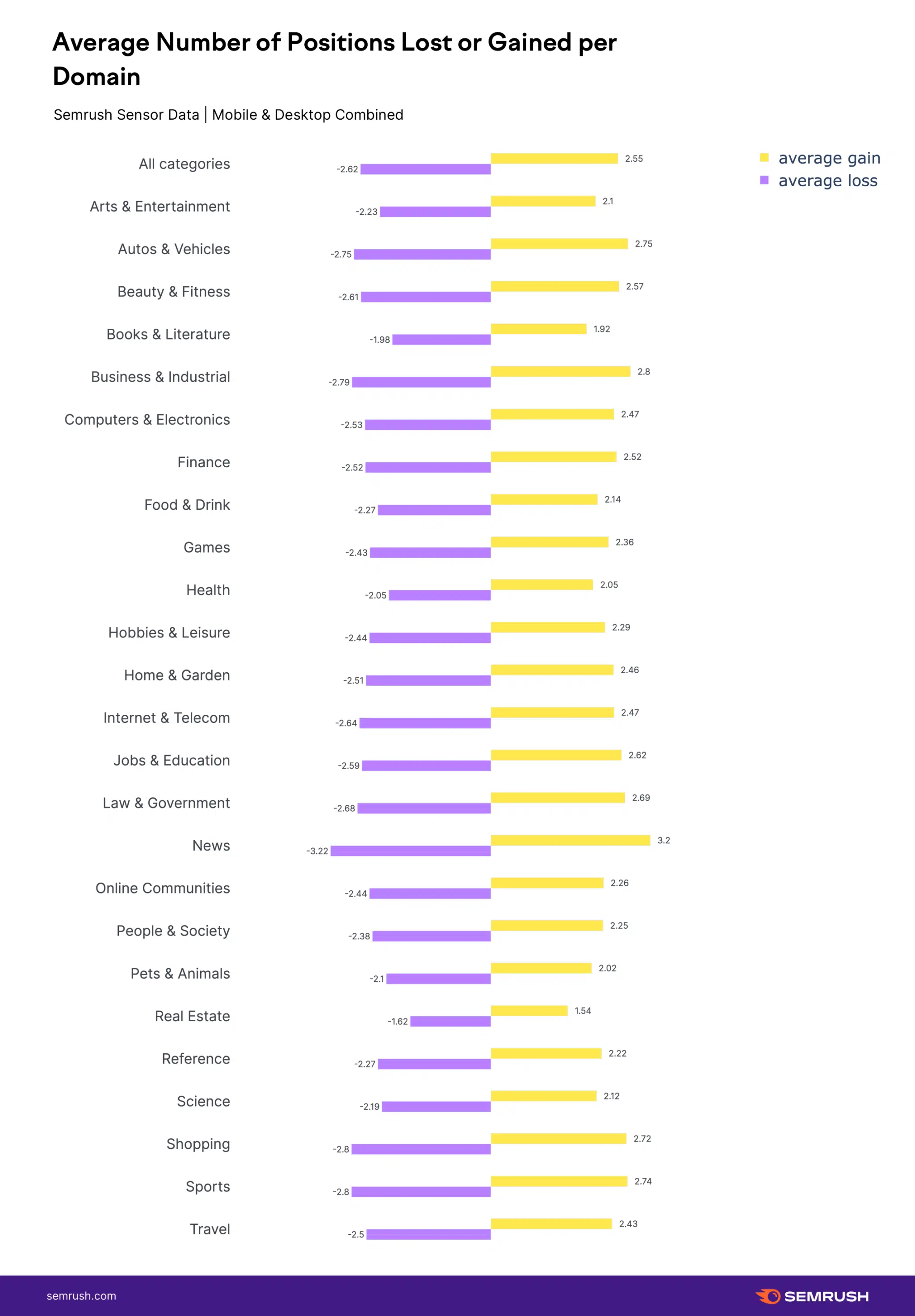
Also, when you look at the top ten position rankings, this October 2023 core update was similar in volatility to the August 2023 update. Mordy Obserstein said “the potential “drastic-ness” of the ranking swings was similar to the August 2023 Core Update with roughly the same % of URLs ranking top 10 after the update having not ranked top 20 prior to it.”

It is hard to know if this was some sort of correction or reversal of previous core updates. Google would say these are just improvements, and no reversal was done. But when you dig into some examples, it can often look like a reversal. However, maybe those sites improved over the past few months since the last update. Again, it is hard to tell, “The big question is: Was this a reversal of some of the things rolled out with the August 2023 Core Update? The answer is, who the hell knows? Manually looking at both some of the keyword-level ranking trends and domain-level trends – I would anecdotally say, no (at least in terms of it being the underlying nature of the update),” Mordy Oberstein told me.
RankRanger/SimilarWeb. The RankRanger/SimilarWeb team is still working on their deep dive but their SERP Seismometer shows a similar peak of volatility on the 10th of October. Shay Harel from SimilarWeb said, “our analysis is based on the massive spike we saw on the 10th.”

They plotted the average position changes for all the Core updates since December 2020 in the chart below. If you look at the average fluctuations for the October update, you can see that it has the lowest average position changes since November 2021.
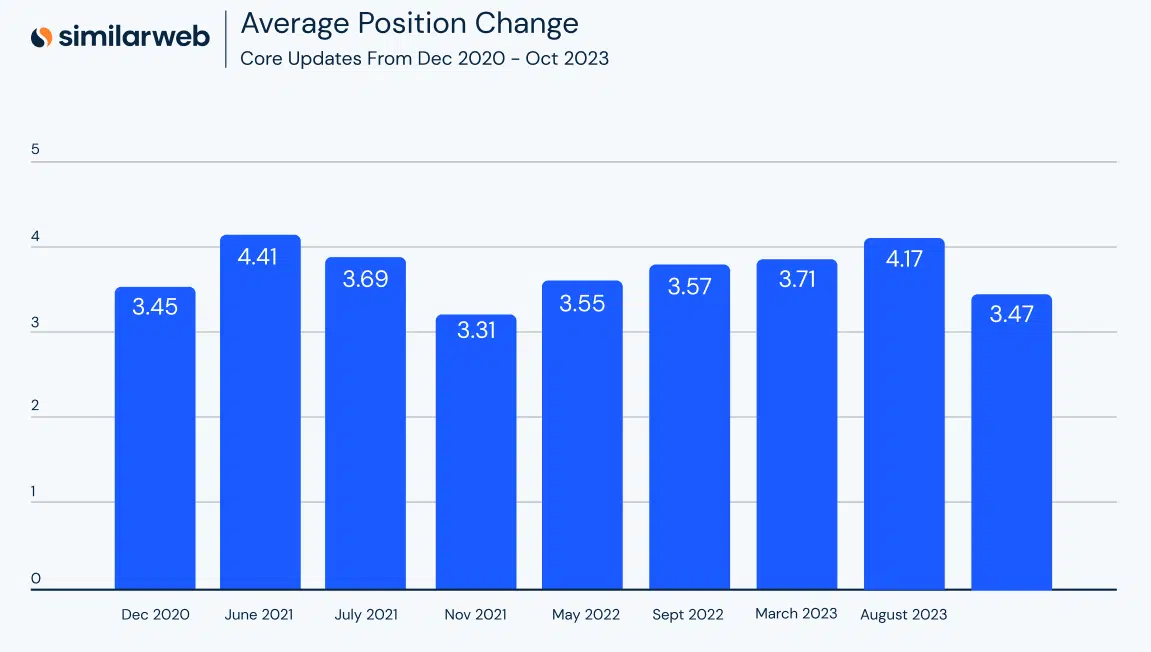
This next chart looks at the top 3, top 5, and top 10 positions. You can see that the October update showed lower rank volatility than the August update in the top 3 and top 5 positions:

seoClarity. Mark Traphagen from seoClarity shared the seoClarity Rank Fluctuation tracker and some winners and losers charts. Again, you can see the spike hit on October 10th:

These winner and loser charts are “the biggest estimated traffic gainers in nine industries, based on a before vs after for both of the major October updates (Core and Spam),” Mark Traphagen told us.
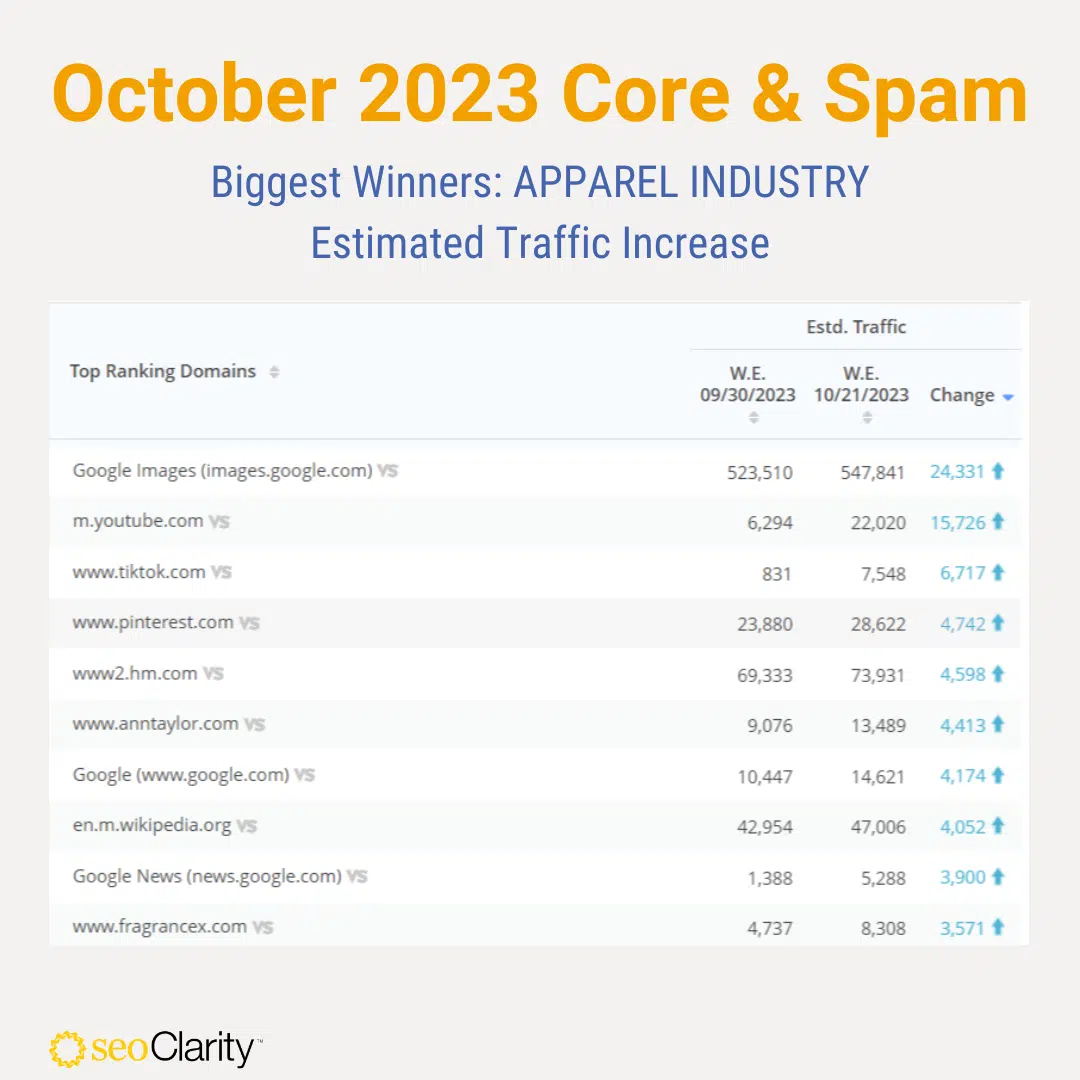








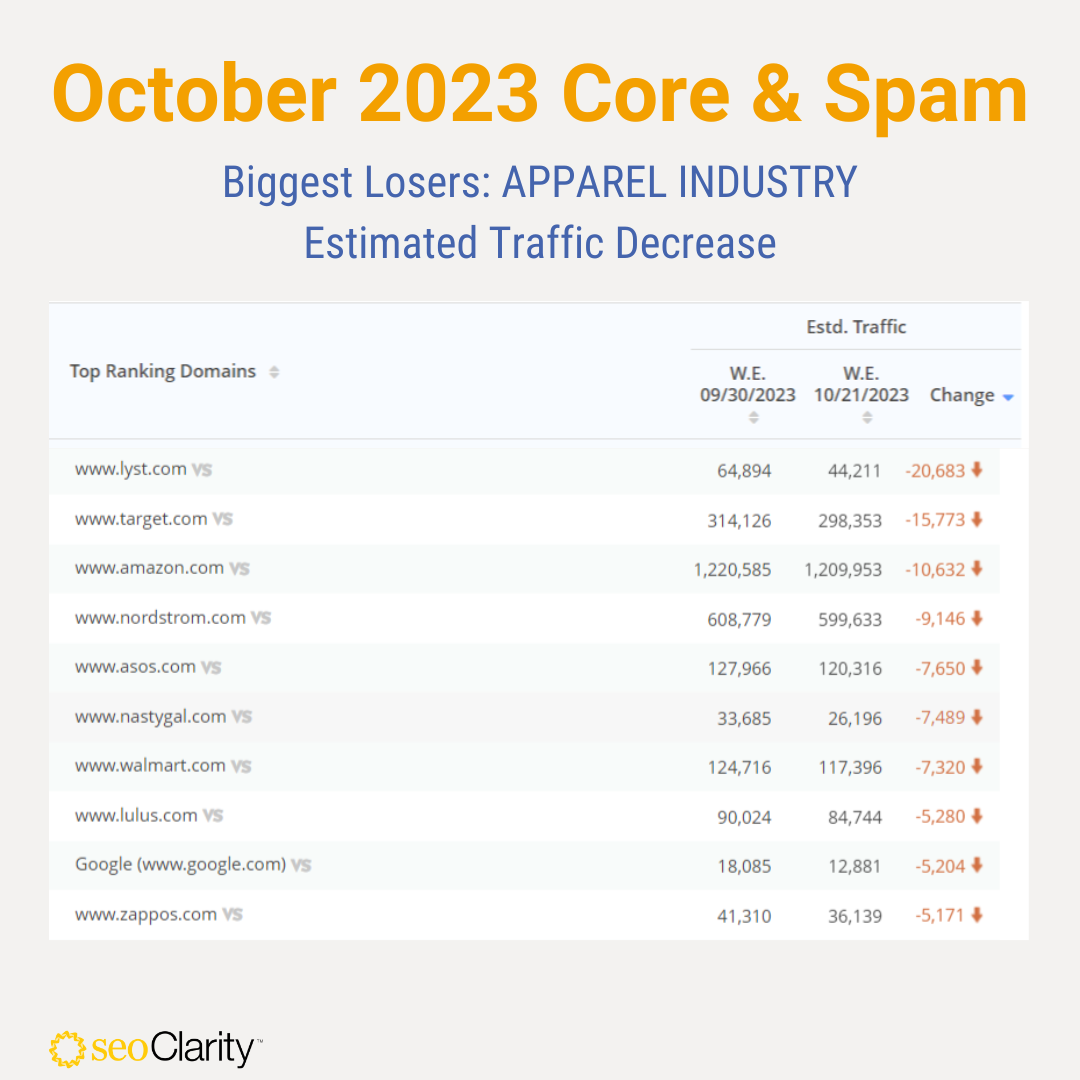


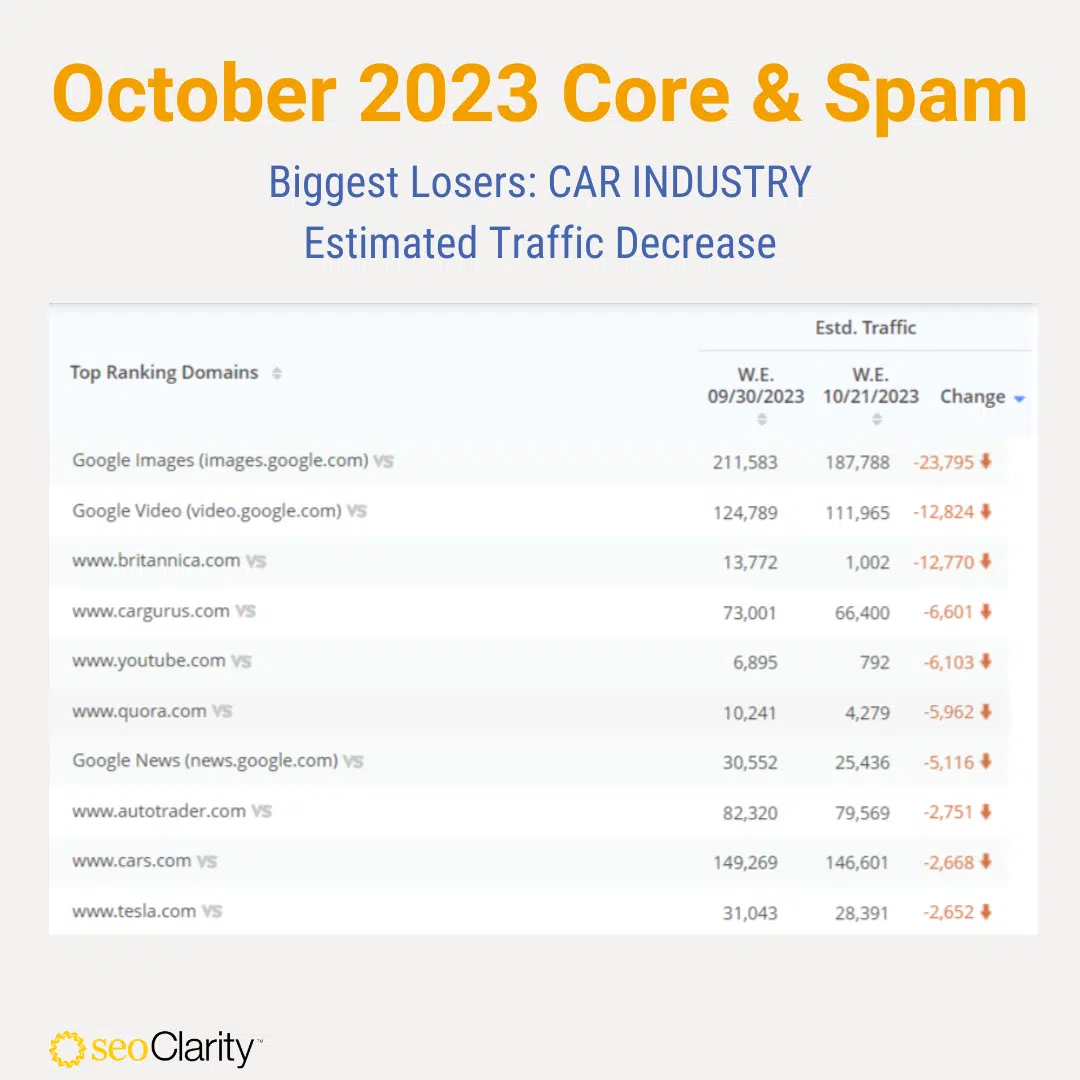


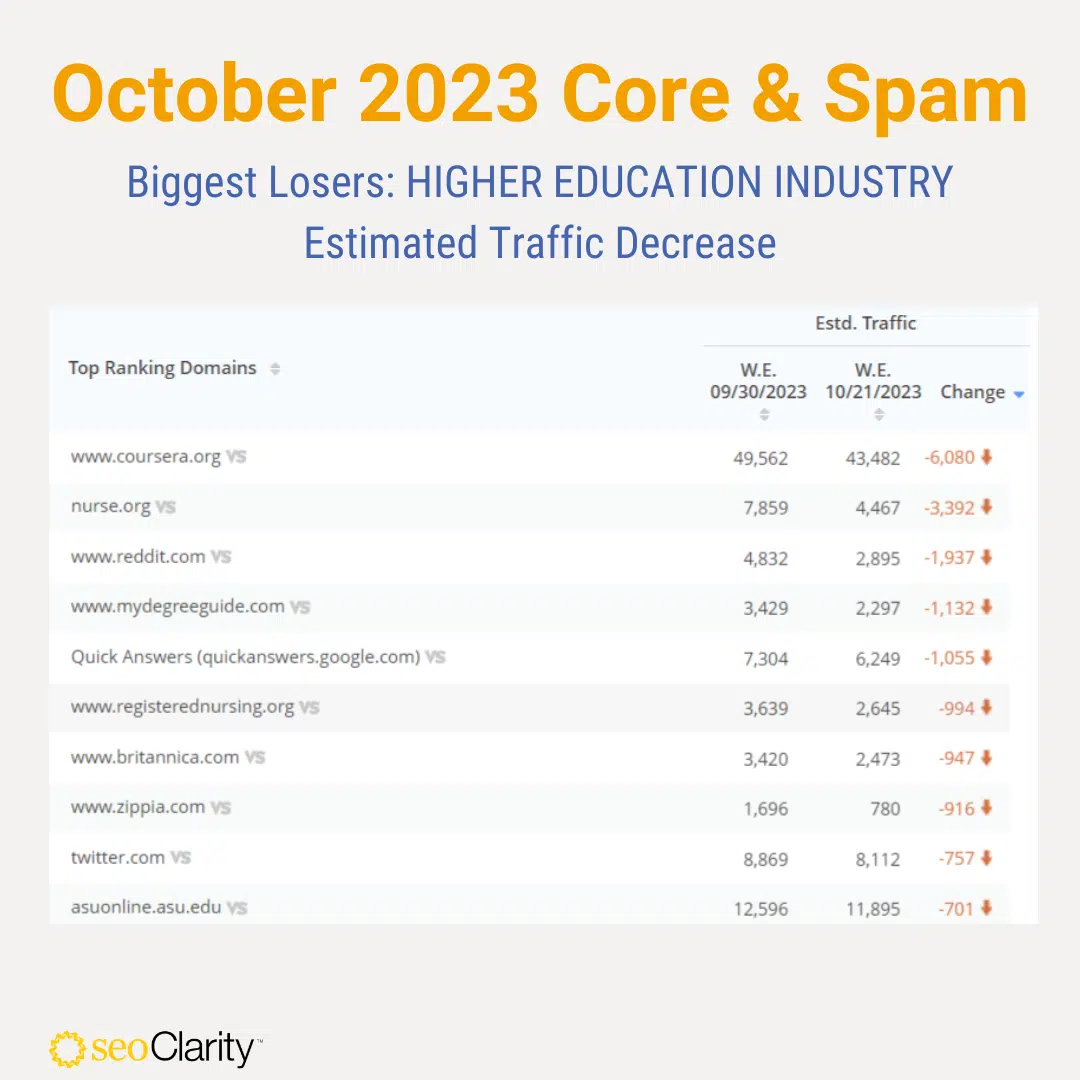
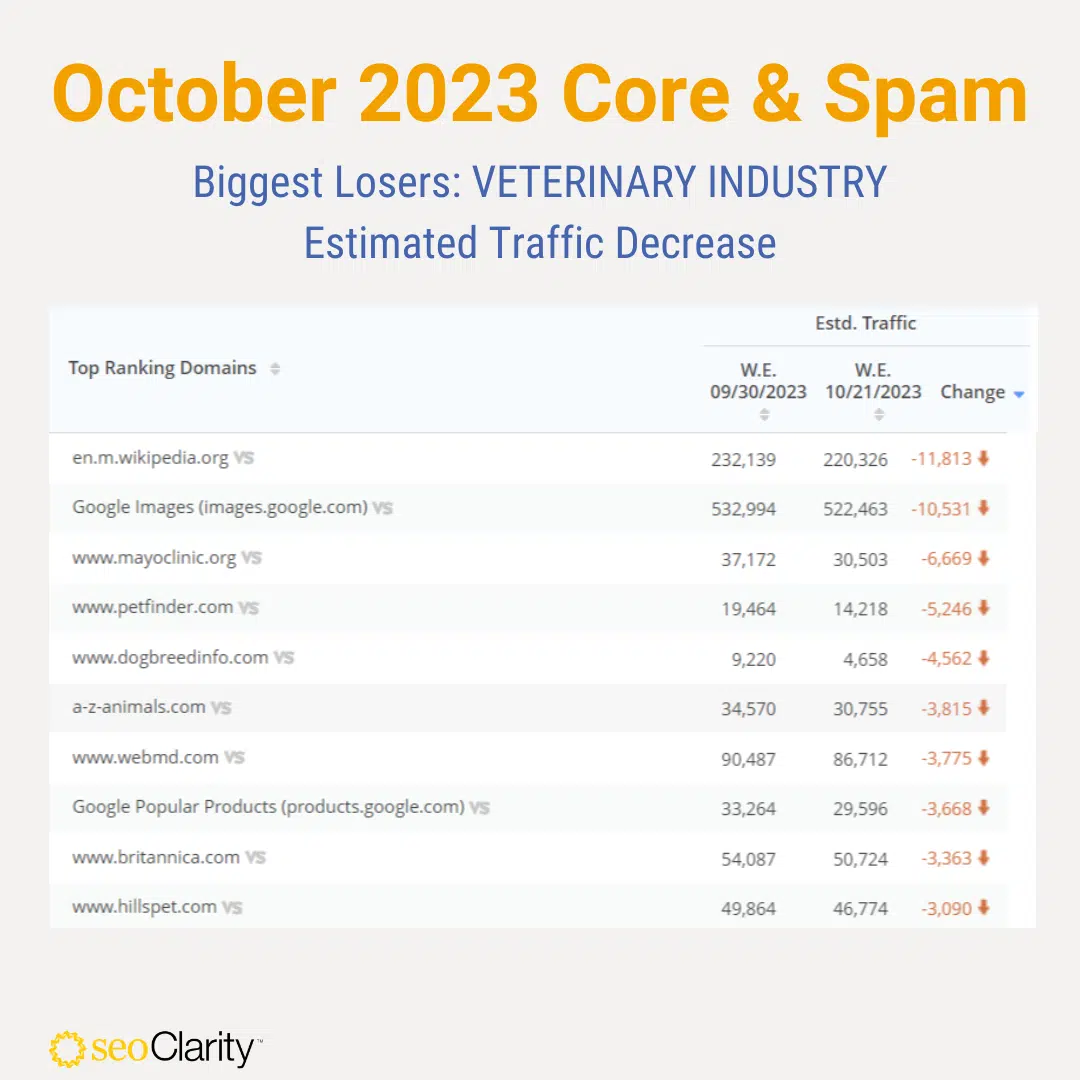

Sistrix. Steve Paine from Sistrix did its own analysis and told Search Engine Land, “Dual concurrent updates doesn’t let us do any conclusive analysis but we’ve looked at many hundreds of domains to see if certain sectors have been hit harder than others.” “It doesn’t take long to see that many established sites that lost large percentages were reference sites, Losing domains were more pronounced and more widespread than winning domains,” Paine added.
Here is a chart showing the volatility over time from Sistrix’s data:


Here are the “shakers” data from Sistrix:
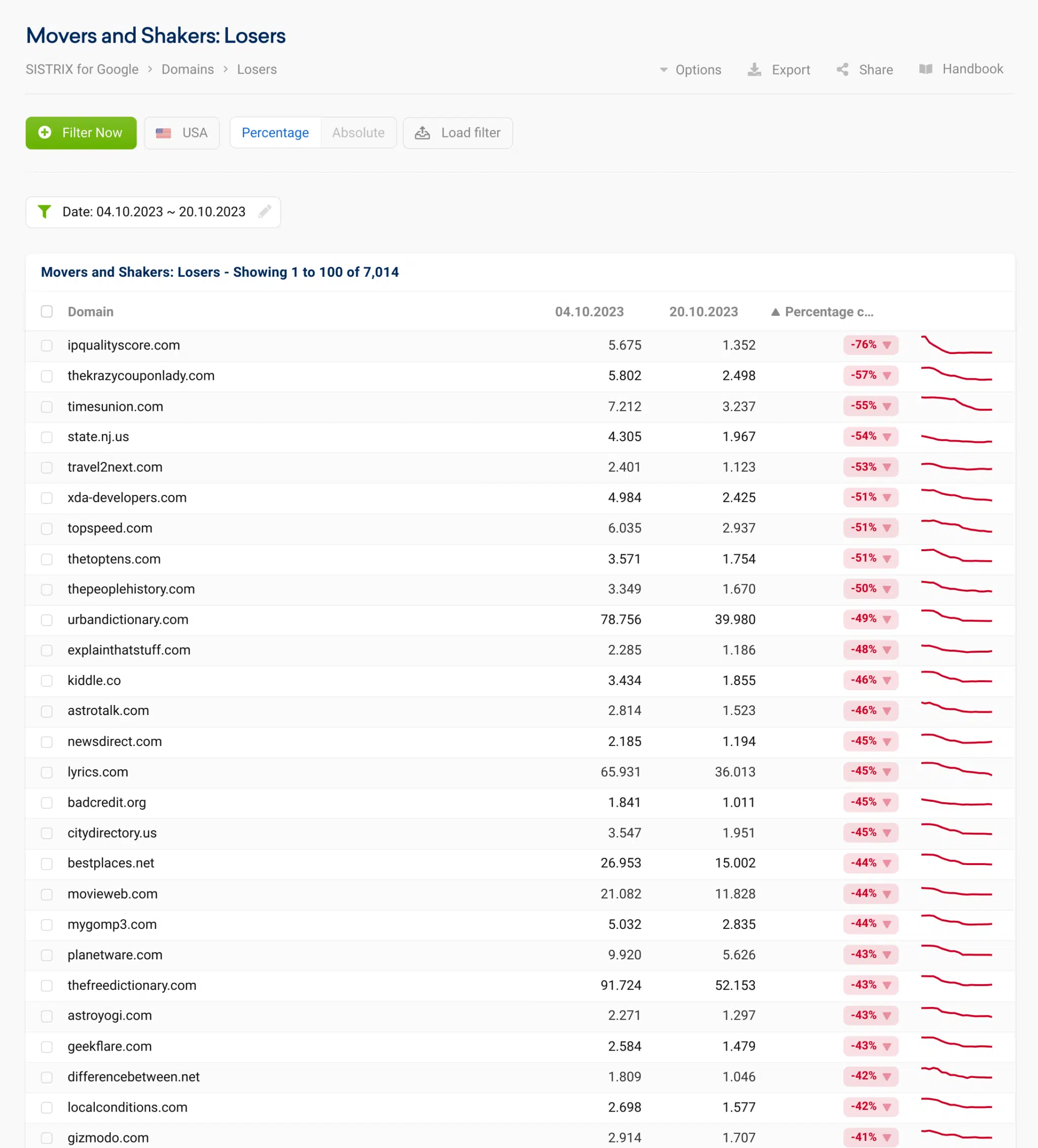
Other tools. While the other tools did not send me data, many have dashboards that show volatility changes to the search results. Here they are:



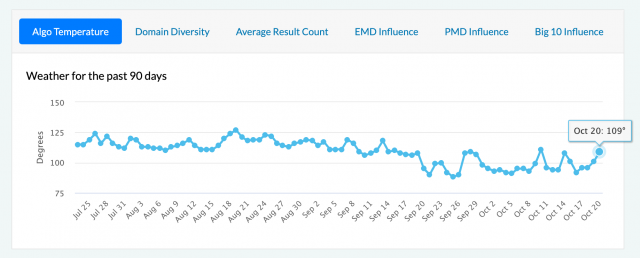






More on the October 2023 core update
Community. On the Search Engine Roundtable, I did a bit of a roundup on what the community noticed across several different stories. We didn’t see significant movement until October 9th/10th and much larger movement on October 10th. Then October 13 and 14 we saw even more volatility and sites being hit.
Based on all I see from the community, this update was very big and the SEO industry was buzzing about it in a very big way
What to do if you are hit. Google has given advice on what to consider if you are negatively impacted by a core update in the past. There aren’t specific actions to take to recover, and in fact, a negative rankings impact may not signal anything is wrong with your pages. However, Google has offered a list of questions to consider if your site is hit by a core update. Google did say you can see a bit of a recovery between core updates but the biggest change you would see would be after another core update.
Why we care. It is often hard to isolate what you need to do to reverse any algorithmic hit your site may have seen. When it comes to Google core updates, it is even harder to do so. What this data and previous experience and advice has shown us is that these core updates are broad, wide and cover a lot of overall quality issues. The data above has reinforced this to be true. So, if your site was hit by a core update, it is often recommended to step back from it all, take a wider view of your overall website and see what you can do to improve the site overall.
Hopefully, your company and your clients did well with this update.
More on Google updates
You can read more of our coverage in Search Engine Land’s Google Algorithm Updates history.
Related stories
New on Search Engine Land